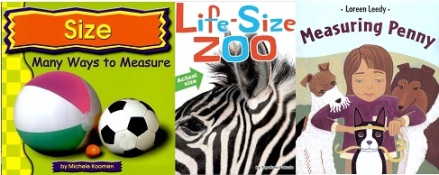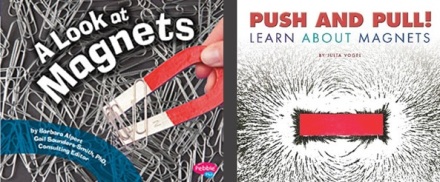
For an overview of the Bookgarteners program, please visit this post.
Karen Beaumont is an author that I think needs to have a larger following. So many of her books are storytime hits, that I wanted to call attention to her as an author for my kiddos.
Group Program
To begin our program, I explained what an author was and what an illustrator was. I talked about how each book has one of each. Sometimes they are the same person and sometimes they are not. Karen Beaumont was the author of the books that I had chosen to highlight, but she worked with lots of different illustrators. One of my favorite connections was a preschooler that recognized David Catrow’s art from both I Ain’t Gonna Paint No More and I Like Myself!. We didn’t watch any YouTube videos because I couldn’t find any. Ms. Beaumont, please record some videos for your young fans!
Afterwards, it was time to read Move Over, Rover! together.

Sequence Cards with Move Over, Rover!
2.B.ECb: With teacher assistance, retell familiar stories with three or more key events.
I had originally wanted to make several flannelboard copies of the story for the kids to use in their retelling, but time got the best of me this past spring and I opted instead to purchase a set from Teachers Pay Teachers which included story character cards that I used as sequencing cards. Each child got their own pack and we worked through the story together. I was impressed at their recall for the order of the animals!
Activity Stations
Four activity stations were spread out around the room. I had one adult volunteer in the room with me to help control the flow of kiddos. (You’ll notice that I changed from a teen to an adult volunteer at this program. Ultimately, it was too much for one teen volunteer to handle and I was unable to get two teens during the after-school time.)

Do-a-Dot Marker on the Wall for I Ain’t Gonna Paint No More
25.A.ECd: Visual Arts. Investigate and participate in activities using visual arts materials.
This wall art activity was inspired by TeachPreschool, via Pinterest. I simply had to let them paint on the wall, right? TeachPreschool’s blog post is amazing, with tons of great art content. Since I was doing this activity in another program, I chose to make it a bit tidier with do-a-dot markers and large post-it notes. And the great part was I could change the “canvas” with each child so they got to take their pictures home.

Music Dancing with Baby Danced the Polka
19.B.ECa: Coordinate movements to perform complex tasks.
19.B.ECc: Combine large motor movements with and without the use of equipment.
25.A.ECa: Movement and Dance. Build awareness of, explore, and participate in dance and creative movement activities.
25.A.ECc: Music. Begin to appreciate and participate in music activities.
This idea came from my own head. I love music and I love exposing children to different kinds of music. Baby Danced the Polka gave me an opportunity to play some polka music and dance around the room with the kids. We did wind up playing a rousing edition of Freeze Dance as well, inspired by the lead of some of the kids.

I Like Me/All About Me Paper for I Like Myself!
5.A.Eca: Experiment with writing tools and materials.
5.B.ECa: With teacher assistance, use a combination of drawing, dictating, or writing to express an opinion about a book or topic.
16.A.ECb: Develop a basic awareness of self as an individual.
30.B.ECa: Describe self using several basic characteristics.
This writing exercise came from Simply Second Grade, via Pinterest. I knew that this activity was going to prove more difficult for my three-year-olds, which is why I had my adult volunteer stationed here to either spell words out loud for them or to write down what they dictated. All of the kids were able to at least write their names, hooray! I used a coloring page that I was able to find online.

Dino Wash for Dini Dinosaur
12.C.ECb: Experiment with changes in matter when combined with other substances.
The station that could have ended all stations. The kids were so excited with this station and I loved the science component. Before class, I made a sloppy mixture of flour and brown tempera paint to make the mud. I did not use a recipe and added more flour to the paint to make it more consistent. I tossed some dinosaurs in the muddy bin and put water in the cleaning bin. Ta-da — they were cleaning Dini Dinosaur. Seriously, I could have just had this station and they would have been happy as clams.
Wrap-Up
This was a perfect spring Bookgarteners. All the kids really loved the two very messy stations (painting and dino washing) and my older friends really spent time working on their “All About Me” papers. The dancing station was hard to integrate as a station and I’m not sure that I’ll repeat it like that or if I would just do a dance before stations.















































